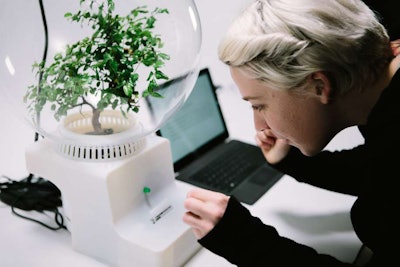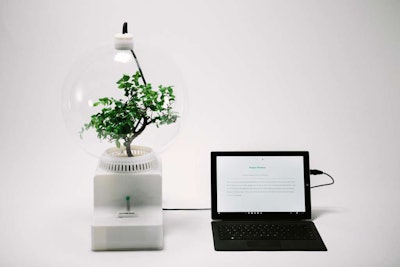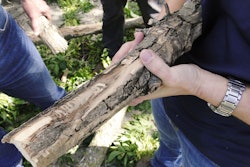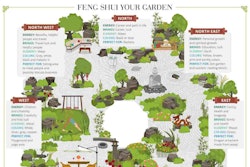 Photo: Project Florence
Photo: Project FlorenceTalking plants? Sounds stranger than fiction, yet Microsoft’s Project Florence is endeavoring to create just that: a communication system between humans and plants.
The concept was conceived by Helene Steiner, a post-doc researcher and artist-in-residence for Microsoft Research’s Studio 99 program. It was originally supposed to be just a thought-provoking, artistic undertaking.
“We wanted to create an idea around the Internet of Things,” Asta Roseway, principle research designer at Microsoft Research, told Fast Co. Design. “That seems to be a hot topic, all things connected, and we wanted to generate another kind of future where we’re getting away from ‘your refrigerator talks to your watch!’ We wanted to make a radical departure there.”
The way the system works involves placing the plant in a sensor loaded capsule that is connected to a computer. The user can type a message and then the sentiment is gauged to see whether it is a negative or a positive message.
 Photo: Project Florence
Photo: Project FlorenceIn a series of blinks of different light colors, the message is conveyed to the plant. For instance, if the sentiment was particularly kind, then the capsule would use long red blinks, since red light helps plants flower.
Sensors monitor the leaves, roots, air and soil to get the gist of how the plant is feeling. After gathering this data, the plant’s “response” is determined to be either positive or negative and is translated through Twitter.
That’s right, Project Florence searches through Twitter for tweets that have similar sentiments to the plant.
“We can almost create moods of the plant, and abstract the message that comes back,” Steiner said. “When I ask you a question and you’re in a really good mood, the response is probably better than (if) you’re tired. That’s why we thought natural language processing was a good way (to indicate the plant’s state).”
This method can compress collections of data into brief statements that people can process quickly. The possibility of having a responsive environment has sparked interest from different groups within Microsoft, and Steiner plans to keep working on improving the interpretation of plants’ chemical and electrical signals.
“We were kind of caught off guard a little bit, because this raised a lot of visibility across the company,” Roseway said. “We’ve been approached by groups across Microsoft in agriculture and urban farming … it’s brought together all sorts of folks from multiple fields and disciplines. It’s engineers sitting with biologists sitting with software (developers). That kind of cross-collaboration is essential for emerging technologies.”










